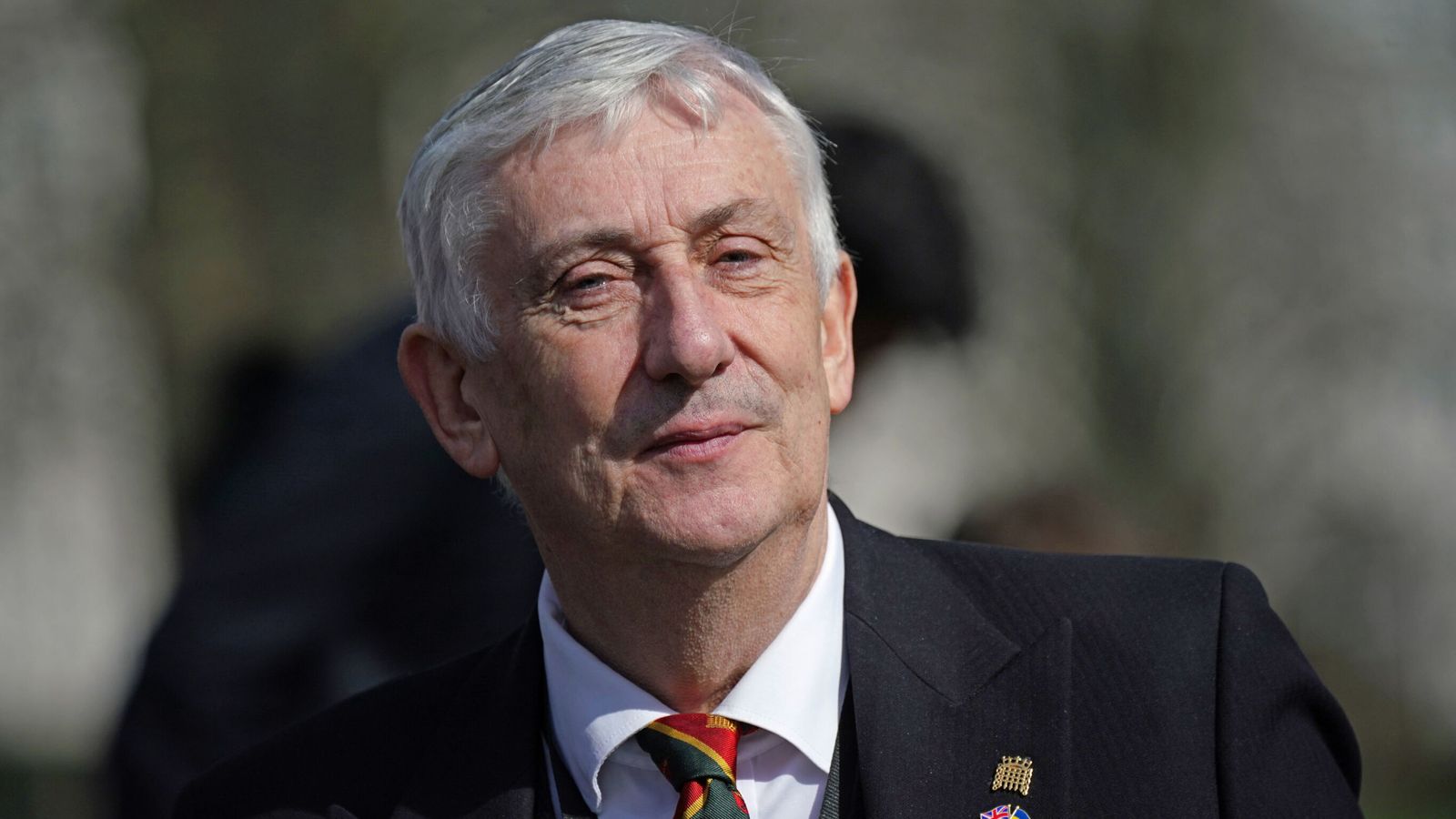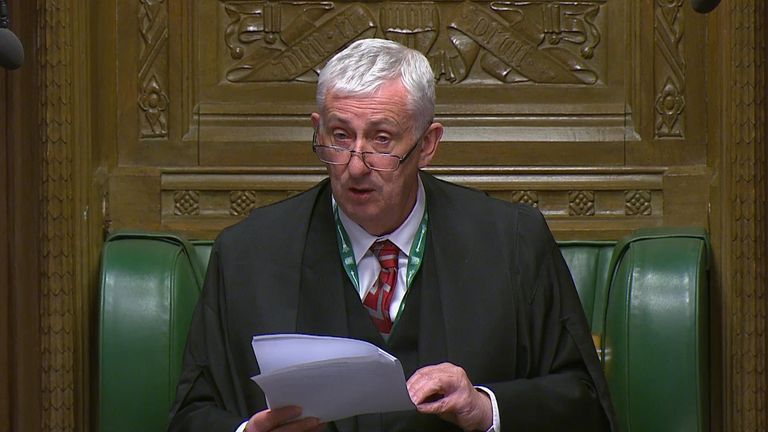Raised voices, walk-outs, calls for resignations, even a few tears – it was a hairy day over in parliament on Wednesday and not the usual scenes expected from an opposition day debate.
So what rattled Westminster and its MPs? And how did the Speaker, Sir Lindsay Hoyle, find himself at the centre of the furore?
Politics live: Tens of MPs sign no-confidence motion in Speaker after Commons chaos
We take a look at how the saga played out.
What was supposed to happen today?
As the third largest party in the Commons, the SNP is entitled to three opposition days in parliament every session – letting them pick the topic to be debated on the floor of the chamber.
Wednesday was one of those days, and the party chose the Israel-Hamas war, laying down a motion calling for an “immediate ceasefire” in the Middle East.
This has been a long-held position of the SNP, so the proposal came as no surprise.
But it did lead to mounting pressure on the Labour Party to shift its position – which had, until this point, echoed the government’s calls for a “pause” – as the last time a ceasefire vote took place, there was a raft of resignations from their frontbench.
So, on Tuesday – and after days of speculation – shadow foreign secretary David Lammy announced Labour would be putting forward an amendment to the SNP motion, calling for an “immediate humanitarian ceasefire”.
There were still caveats in place, including ensuring both sides laid down their weapons and that all the Israeli hostages were released, but it was seen as a big shift for Labour.
Come Wednesday, the stage was set for the debate – but little did we know about the chaos that was coming.
Why is the Speaker in trouble?
At the start of a debate on a motion, it is down to the Speaker to decide if any amendments to it can be debated and voted on.
But parliamentary convention says that if the motion has been put forward by an opposition party, like the SNP, it cannot be amended by another opposition party, like Labour – only by the government.
Despite anger from his clerk, and feathers being spat by a number of MPs, Sir Lindsay decided both the government and Labour’s amendments to the SNP’s motion could and would be voted on, claiming he wanted to give the House as many options as possible when debating such an emotive topic.
Conservative MPs accused the Speaker – a Labour MP before taking on the role – of making an “overtly political decision” to help Sir Keir Starmer fend off a rebellion from his own MPs, who could back the SNP motion without a Labour alternative to support.
Then came a curve ball from the Tory Leader of the House, Penny Mordaunt, who decided to pull the government’s amendment from the floor.
She announced her party would “play no further part” in proceedings in protest at the actions of Sir Lindsay – something she claimed “undermined the confidence” of MPs in the House’s procedures.
And with that amendment gone – and Tories abstaining from any votes – Labour’s amendment was able to pass without a vote.
But that meant the original SNP motion had been changed to Labour’s form of words, and the Scottish MPs never got a chance to vote on their own proposal, leading to fury from their benches.
How has he responded?
MPs from the SNP and the Conservatives staged a walkout in protest to what had played out and demanded Sir Lindsay come to the Commons to explain himself.
And eventually, he did, apologising to all sides over what had happened.
The Speaker reiterated his earlier justifications for selecting the Labour amendment, saying he had been trying to ensure all options were on the table for MPs to vote on – as well as protecting MPs’ safety.
“I thought I was doing the right thing and the best thing, and I regret it, and I apologise for how it’s ended up,” he said.
“I do take responsibility for my actions.”
But Tory MPs were heard shouting “resign” throughout his apology, and SNP leader Stephen Flynn said he would “take significant convincing” that his position was “not now intolerable”.
Could he be replaced?
After all the drama had come to a close in the chamber, there were more parliamentary shenanigans to be had.
A group of 33 MPs from both the Tories and the SNP signed up to a no-confidence motion in Sir Lindsay in the form of an early-day motion.
So-called EDMs are rarely debated, but they offer MPs a way of drawing attention to their views and stating them publicly.
So while it may highlight their unhappiness with the Speaker, it doesn’t push him out the door.
Yet there is a feeling in the air that Sir Lindsay is going to have to fight to keep his job now and win over his critics.
How would parliament choose a new speaker?
According to the Institute for Government, there’s no formal means of removing the Speaker from their role.
But MPs can hold a vote of no confidence in him or her, making it extremely difficult for them to hold on – and perhaps pushing them towards resigning.
If Sir Lindsay did step down – either because of a vote or the threat of one coming his way – the chair would need to be filled.
Candidates would be put forward via written nominations, and if one secured more than 50% of the vote among MPs, a motion would be put to the Commons to confirm their appointment.
If the motion didn’t pass, selection and voting would start again.
If nobody secured 50% in the first place, the candidate with the lowest vote share would be removed from the ballot and the vote would be repeated until someone hit the threshold and a winner emerged.





